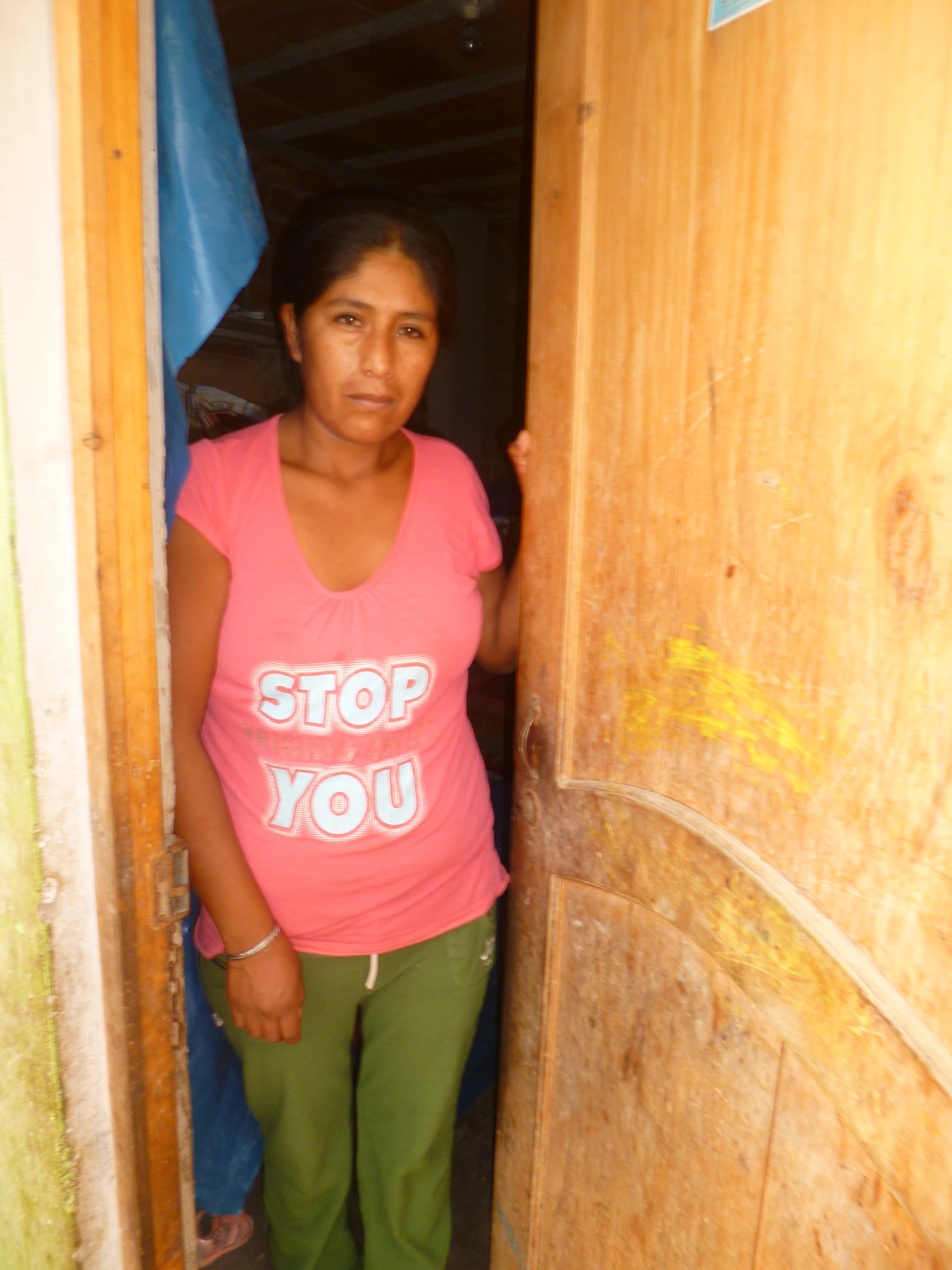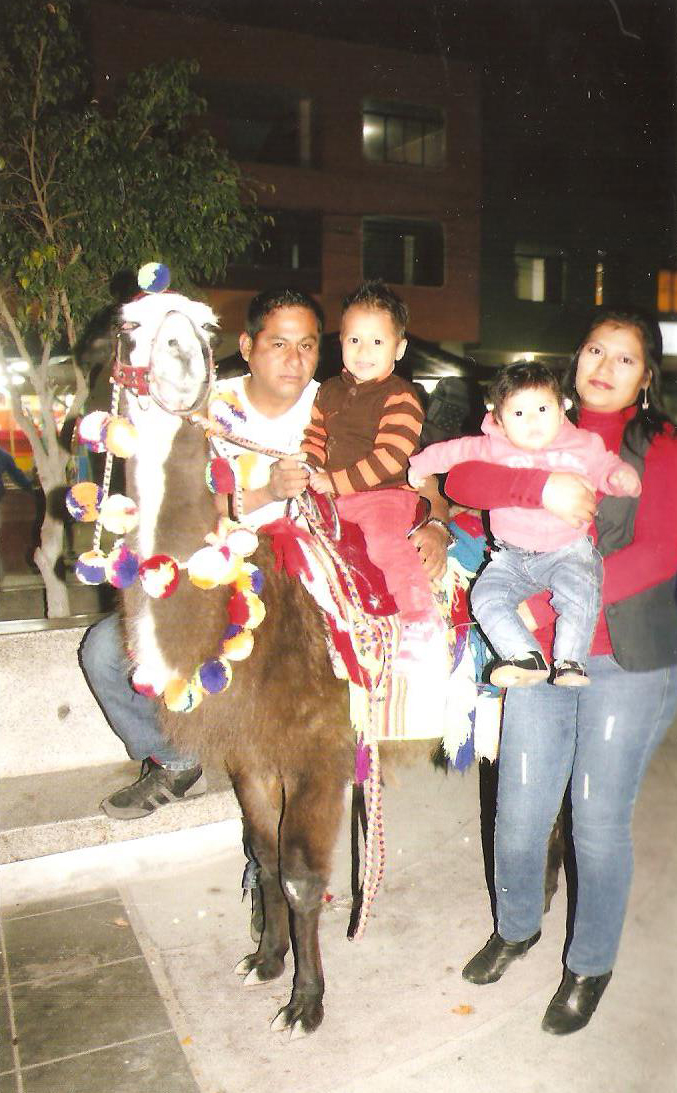
Project Goal:
To provide long-term comprehensive health assistance to the people in the province of Pisco (pop: 125,000), specifically in the district of San Clemente (pop: 30,000).
Project Objectives:
– Treatment of acute and chronic illnesses in the urgent care center “Policlínico Peruano Americano.” San Clemente is a very impoverished area and all services are offered free of charge. Much attention is given towards prevention and health education within all facets of the clinic’s operations.
– To improve the comprehensive health of the community through outreach programs, educational programs, and public health initiatives.
Summary of RMF-sponsored activities carried out during the reporting period under each project objective:
BACKGROUND
On August 15, 2007, Pisco, Perú experienced a deadly earthquake…7.9 on the Richter Scale. Over 1,000 people died, 40,000 families were left without homes, and 150,000 people were left without water. The majority of the health infrastructure was damaged or destroyed in the earthquake and the people were in need of medical attention. The Real Medicine Foundation team was deployed to Perú on October 12 in an effort to assist those in need.
The primary objective of our project was to bring long-term free healthcare to the victims of the earthquake who had lost their homes, possessions, and in many cases, loved ones. The areas most affected were Pisco, Ica, Chincha, Cañete, and Huancavelica. The site of the RMF clinic is in San Clemente, Pisco. San Clemente is the poorest district of Pisco and the overwhelming majority cannot afford to pay for health services. In addition, outreach programs have been initiated to service the health needs in the very remote and impoverished areas around San Clemente and Pisco.
San Clemente is a very impoverished area and all of the services offered are free. The clinic places much importance on prevention and education and this is evident within all facets of the clinic’s operations.
The new location for the Policlínico Perúano Americano opened its doors on May 19, 2014 on Calle Barrios Altos Nº 426 in San Clemente. Operating Hours: 7am – 4pm

Photo: Doctor's consulting office at new location
Results and/or accomplishments achieved during this reporting period:
- During the month of April the clinic stayed open until 6pm under the supervision of Dr. Edwyn Alzamora.
- In mid-April we also had the support of Dr. Luis Mario, who is employed by the state government. Dr. Luis Mario is in charge of taking the Ultrasound examinations.
- During May we worked with Dr. Karina Huaroto. She had carried out SERUM in the province of Independence, which is very close to San Clemente. She covered Dr. Luis Mario’s hours.
- We came to an agreement with the Municipality of San Clemente in a Municipal Assembly. All members agreed that they are responsible for the payment of rent, electrical services, cleaning and gardening. The new location is approximately two blocks from the Municipality, located in the central square Desan Clemente. We have taken the entire second floor of the building
- We operated in the old location until May 15th which was the deadline established by DIRESA.
- We moved from May 19th-26th. Our entire staff collaborated in the transfer of medical equipment, etc.
- Funds raised by the laboratory in the months of April, May and June: US$1,305.
Number served/number of direct project beneficiaries:
Total Number of Direct Beneficiaries: 1,404
- Patients Seen: 1,404
- Average per day: 28.6
- New Patients: 205
- Demographics:
- Male: 479
- Female: 925
- <1 year: 189
- 1 – 5 years: 349
- 6 – 14 years: 121
- 15 – 24 years: 60
- 25 – 39 years: 48
- 20 – 59 years: 597
- 60+ years: 40
Patient Success Stories
CASE 1
Vicenta Flowers Shock was born in Huancavelica and is 71 years old. When she was 6 months old, her mother passed away, leaving her father and older sister (whom she considered to be her mother) to raise her. She longs to have known her mother, especially on occasions where parents usually attend, in particular her school age years.

Vicenta only studied up to the 3rd grade. In her adolescence she experienced deception when she fell in love with a man, and then later discovered he was married. Upon her discovery she decided to end the relationship. In the remainder of her days, she fell in love again, this time the relationship was very stable and endearing. They had five children and their children now have families of their own.
Vicenta visited San Clemente in 1979, as at that time Huancavelica was experiencing terrorism, and the majority of the victims of this conflict were Andean indigenous people, especially farmers, Quechua-speaking poor and rural areas, among others. Terrorists deliberately attacked civilians, making this conflict the bloodiest in the history of Perú. This frightened the people for many years, which generated the emigration of some of them, and for that reason Vicenta decided to stay and live in San Clemente.
She became a widow 2 years ago, and now lives alone.
Vicenta came to our Policlínico Peruano Americano with respiratory problems. She was diagnosed with bronchial asthma and was given treatment and was counseled daily. She is an assiduous patient at the Policlínico Peruano Americano, which is a big help for people such as her who are of low economic resources.
CASE 2
Gladis Chuquimamani is 32 years old and the second of two sisters; she was born in Julica Puno province.When she was 9 years old, her parents separated. She lived with her father until age 14. When her father married another woman, she went to live with her grandmother. At the end of their secondary studies, she was excited about joining the police academy, but due to financial reasons she had to drop out of the academy in order to get a job.
At age 20 she come to Pisco with some friends in search of work. After working at a fish factory for three years, she found a husband, who worked as a driver, and they had four children. In 2005, she moved from Pisco to San Clemente where she lives in a single hut. She is now mother and father to her children, therefore when she leaves to work she leaves the eldest son, who is just 9 years old, in charge of his siblings. She highly values the care she receives at our Policlínico Peruano Americano and the friendliness of the RMF team.
CASE 3
Astrid Farrier Cárdenas was born in the city of Grappa, and is 28 years old.
She is the fourth of five siblings. Her primary studies were performed in Pisco, and the secondary school in San Clemente. At age 18 she entered into a University, from which she had to leave due to economic problems.
At age 20, she returned to her studies at the Instituto Federico Villareal. During her 2nd semester she met a young man named Luis and fell in love. Astrid studied until the 5th semester then she left due to the fact that she got pregnant. After giving birth she wanted to return to her studies at the university, but her partner didn’t want her to.
 For months, the couple lived with her parents until they could become independent. During that time she suffered constant abuse, physical and psychological, such as humiliation and blackmail. Her partner would beat her in front of her 2-year-old son, regardless of the trauma this can cause a minor. Astrid got pregnant for the second time. When the baby was 10 months old, she no longer could bear the harmful treatment and decided to report the abuse to the authorities.
For months, the couple lived with her parents until they could become independent. During that time she suffered constant abuse, physical and psychological, such as humiliation and blackmail. Her partner would beat her in front of her 2-year-old son, regardless of the trauma this can cause a minor. Astrid got pregnant for the second time. When the baby was 10 months old, she no longer could bear the harmful treatment and decided to report the abuse to the authorities.
Astrid now lives with her parents and her two beautiful children. She returned to her studies at the Instituto Federico Villareal in which she is only one semester away from completing her Degree as a Pharmacy Technician. And she has decided to move forward by being mother and father to her children.
In the course of these past few months Astrid brought her son to our Policlínico Peruano Americano as he had a high temperature of 39°. We administered Paracetamol, and then the physician advised her to give him cool baths, to help lower the temperature. Afterwards we conducted laboratory tests to rule out urinary tract infection. She returned later that day to receive adequate treatment for the infection.
Background
On August 15, 2007, Pisco, Peru experienced a deadly earthquake: 7.9 on the Richter scale. Over 500 people died, more than 37,000 families were left without homes, and 150,000 people were left without water. The majority of the health infrastructure was damaged or destroyed in the earthquake, and the people were in need of medical attention. Real Medicine Foundation’s team was deployed to Peru on October 12 in an effort to assist those most in need.
The primary objective of our project was to bring long-term free healthcare to the victims of the earthquake who had lost their homes, possessions, and in many cases, loved ones. The areas most affected were Pisco, Ica, Chincha, Cañete, and Huancavelica. The site of the RMF clinic is in San Clemente, Pisco. San Clemente is the poorest district of Pisco, and the overwhelming majority of people cannot afford to pay for health services. In addition, outreach programs have been initiated to service the health needs in the very remote and impoverished areas around San Clemente and Pisco.
Objectives
- Treatment of acute and chronic illnesses at our urgent care center, “Policlínico Peruano Americano.”
- To provide all basic health services for free. To promote co-responsibility and sustainability, the clinic requests a minimal fee for specialty services, such as lab work and ultrasounds, and offers wholesale prices for medication. Patients who cannot afford minimal fees or wholesale prices are not charged.
- To improve the comprehensive health of the community through outreach programs, educational programs, and public health initiatives.
- Prevention and health education are strongly emphasized in all facets of the clinic’s operations.
More Reports on: Policlínico Peruano Americano Archive
Country Page: Peru
Initiative Page: Policlínico Peruano Americano
